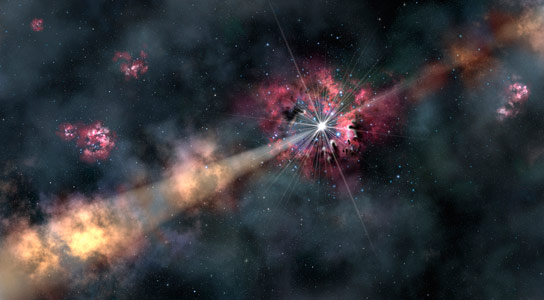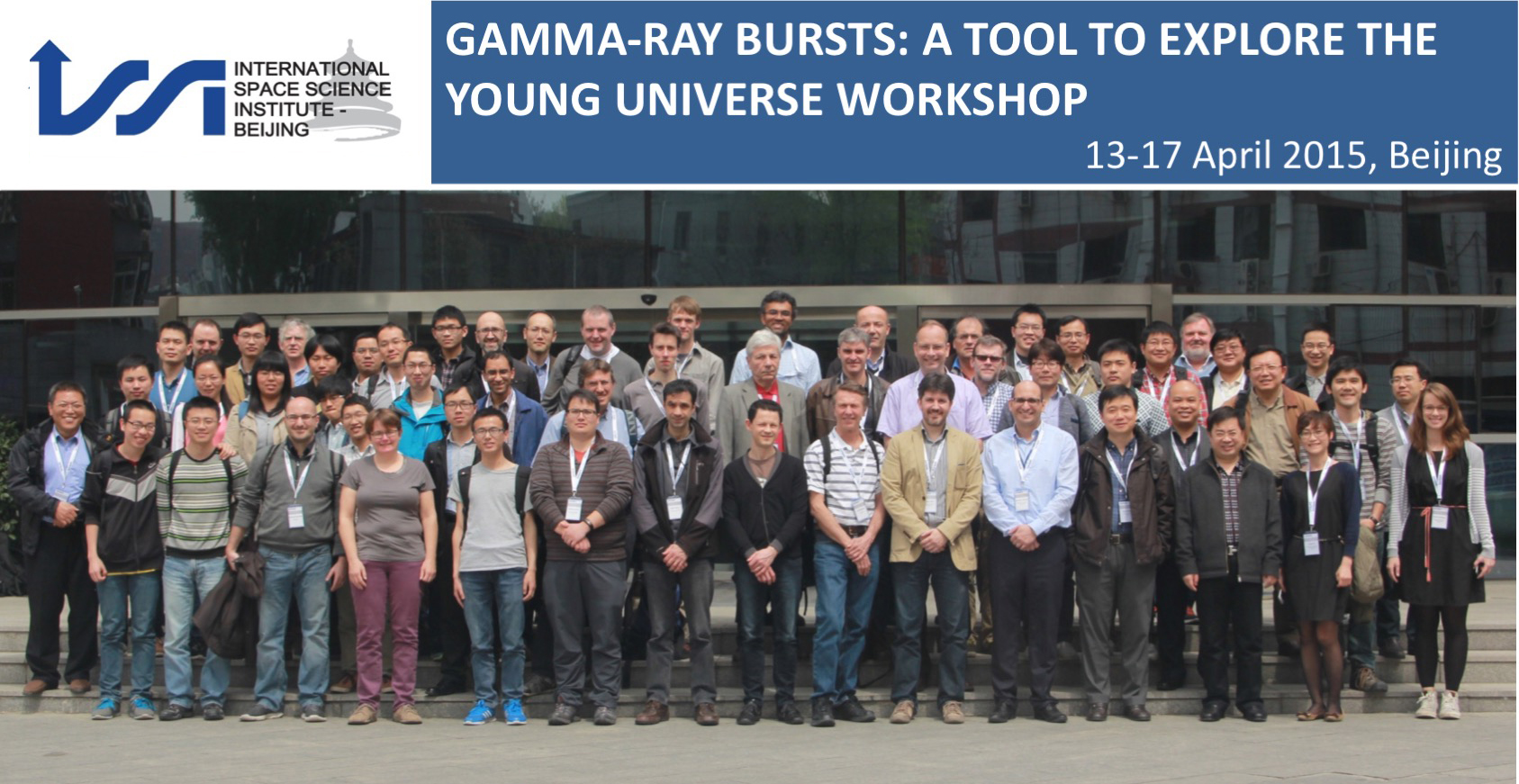
Credit: Gemini Observatory/AURA, artwork by Lynette Cook
Context of the Workshop
Despite the recent progresses in Gamma-Ray Burst (GRB) science, obtained in particular thanks to the Swift and Fermi satellites, there are still many open questions in the field. One concerns the mechanisms that power these extreme explosions (in a handful of seconds the isotropic equivalent energy emitted by GRBs spans from 1050 to 1054 erg, making them the most luminous events in the Universe), which is still unclear after more than four decades since their discovery. In particular the content of the relativistic flow that produces the GRBs, remains to be investigated: especially in terms of its bulk Lorentz factor, its magnetization, its baryon loading and their consequences on the possibility of GRBs being the sources of Ultra High Energy Cosmic Rays (UHECRs).
Another open issue concerns the nature of GRBs progenitors: while thanks to a handful of spectroscopic associations with type I b/c Supernovae, long GRBs are currently considered the endpoint of very massive (>30-50 MSUN) stars, the situation is less clear for what concerns the short GRBs. The most popular models involve the possibility of a coalescence of two compact objects (black holes or neutron stars), but a direct proof of this model is still lacking.
In addition to particle acceleration, radiation physics, and stellar evolution, GRBs are also pertinent to other branches of astrophysics, like Cosmology. Indeed thanks to their bright afterglows they allow to pinpoint the most distant galaxies, and to study them thanks to the imprinting on the afterglow data of the GRB close environment and the intervening matter between the GRB and the Earth, gathering a wealth of information on the structure and physical state of the gas in the Universe through absorption lines.
Objectives of the Workshop
This ISSI-Beijing workshop aims to elucidate the connection between GRBs and the deep Universe.
In recent years much effort has been put into the ground based follow-up of GRB afterglows: the median measured redshift of long GRBs is ~2 (with the highest value reported to date of ~9.4), which means that GRBs are among the best candidates to study the deep Universe. Ten years after the launch of Swift, statistics on GRBs above z=3 have been constantly improving, reaching more than 40 events to date. It is hence timely to coherently review and assess the current knowledge on Gamma-Ray Bursts, their progenitors, their environment, and the emission mechanisms of the prompt and afterglow emission, in order to understand their nature and origin. Understanding the GRB phenomenon globally is of paramount importance for the use of GRBs as beacons of the deep Universe.
At the same time it is wise to start thinking about how to develop synergies between the high-z GRB studies and the surveys of the deep Universe, especially in the framework of the future GRB dedicated facilities (e.g. SVOM, POLAR).
Date
April 13-17, 2015
More Information
1st Circular>>
2nd Circular>>
Draft program>>
Participants
The conveners of the workshop are:
? Zi Gao Dai, Nanjing University, China
? Maurizio Falanga, ISSI-BJ, Beijing, China
? Neil Gehrels, NASA GSFC, Greenbelt Md.,USA
? Diego G?tz, CEA Saclay, Irfu/Service d’Astrophysique, France
? Emeric Le Floc’h, CEA Saclay, Irfu/Service d’Astrophysique, France
? Nial Tanvir, University of Leicester, UK
? Bing Zhang, University of Nevada, Las Vegas, USA
Participants list>>
Group Picture
